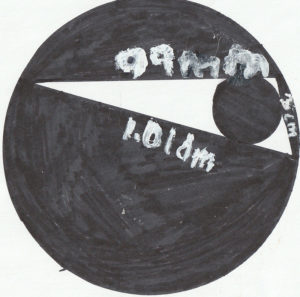Today we begin a special series, captivating circles. This challenge requires trigonometry and geometry.

The first captivating circles challenge is to find the area of the shaded region in the circle in the diagram. All vertices of the white triangle are on the circumference of the big circle, and the small circle is tangent to all 3 sides of the triangle. You may find that this problem requires theorems and formula’s not normally required. Do not be afraid to research the tools you need to solve this problem or other captivating circles, it’s knowing which tools to use that’s the challenge.
